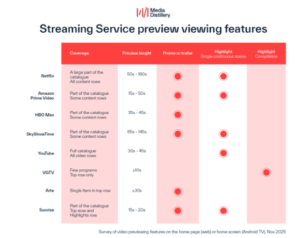In this episode of the mini-interview series, we invited Mark from Axello to talk about the media streaming landscape in Europe, China, and Southeast Asia.
In the interview, Mark kicked off the conversation by sharing a short introduction about Axello and himself.
Mark is the CEO of Axello, a company that helps companies to accelerate their business within Europe. Axello focuses more on the TMT sector — technology, media entertainment, and telecommunications. They focus on the areas of CDN, streaming media, OTT, and infrastructures. What they do is, on one side, they help media companies, like podcasters, telecom operators, content owners, OTT players, et cetera. They help them with business strategy consulting, technology consulting, and so forth. On the other hand, they help media vendors such as the companies that deliver products, services, solutions to those media companies. They help them with the go-to-market in Europe. By connecting both, on one end helping the vendors and then the other end helping media companies. And by connecting them, they create business for both. That’s exactly how Axello accelerates the business within Europe.
After the introduction, Evelyne at BaishanCloud then asked Mark to share some of the insights on what kinds of challenges that media companies are typically facing when entering the European media streaming market.
Mark pointed out that there are four main challenges when entering the European market — diversity, closed ecosystems, scale, and infrastructure.
The first is diversity. Europe is extremely diverse, where the continent itself has 50 countries and 10 major languages. Every country has its own legislation, its own languages, and even some have more languages in the same country. Different privacy rules as every country has its own specifics, and that makes Europe extremely diverse. When they try to enter Europe, a lot of companies don’t really think about what kind of impact diversity actually has. That is the biggest issue that Mark sees. On top of these, there is Brexit, where the UK is no longer a part of the EU but still in Europe. Being not part of the EU complicates things even more.
Another big point is closed ecosystems. Every country in Europe basically has its own local ecosystem. The telecom operators only work within that country. The broadcasting companies only work within that particular company within the borders. That basically means that although the ecosystems are very local, you can’t address Europe as one single ecosystem. Those are a dozen different little ecosystems. Unless you really are in such an ecosystem, you don’t actually what’s going on. This is something a lot of people may have misunderstood when entering Europe.
Another thing is scale. Doing business in Europe requires you to do local business. You need local business in France, Germany, and so on. So local business is significant. You can treat Europe as a whole, but it is different from the US. One deal can have you covered in the US in the US, whereas in Europe, you have to make several deals to achieve the same.
The last part is infrastructure. Every country has its own infrastructure, and certain countries even have very regional-based infrastructure still. This makes you really need to have a good delivery mechanism using CDNs and clouds to deliver content in a good and fast way into those countries.
As the conversation moves toward the Chinese and Asian markets, Evelyne started the discussion with Mark about what are the challenges for media vendors when entering markets in China and Asia.
Mark brought up that the biggest issue in Southeast Asia and China is unknown. He has been in China and Southeast Asia a dozen times, so he is pretty familiar with how things work there. A lot of companies just don’t understand the ecosystems there. The only reference they have is media and maybe a few visits. Still, they really don’t know how things operate, how relationships work, and how things are different even within different regions within Southeast Asia and China. Mark thinks that the fact that it is unknown becomes one of the biggest issues. It also reflects the digital space. Infrastructures in Southeast Asia are very diverse, making it very difficult unless you really knew how the infrastructure works to do proper delivery within those areas. Suppose you don’t specifically zoom into China. In that case, you have specific elements there, such as the ICP license that you need to have and other aspects that come into play where a lot don’t even think about your CEO, your trackers, and your videos. All those need to have attention to how they work within China. Without that, we can’t really do the right digital exercise within the region. Marks summed up that this is the biggest issue he has seen in the region.
To solve the problems stated above, both Mark and Evelyne have some suggestions and recommendations.
Evelyne agreed and followed-up with Mark’s point that when dealing with complicated ecosystems like China and Southeast Asia, it will be ideal to partner with local experts, such as BaishanCloud to help with regulation and delivery. A little bit about BaishanCloud, BaishanCloud has over 400 points of presence in China and robust local support, which can help companies trying to deliver content into China and optimize their digital delivery.
Mark mentioned that the biggest thing you can do is work with local experts like Axello in Europe. They know Europe. They know the local ecosystems and the local players. That is why they can help accelerate companies much faster in Europe because they know the way already. It is the same if you look at what BaishanCloud does, for instance, in Asia, there are many similarities in what we do even though our businesses are in different approaches. BaishanCloud has extended experience within the region, in China and Southeast Asia. With that, it can help companies much faster and much better in knowing how to make sure that it performs. Working with local experts will save you time and costs and make sure you can go into the markets much faster.
BaishanCloud is a leading global data service provider specialized in cross-border content delivery and edge security in China and Asia. To get more articles on trendy topics related to cloud delivery, streaming best practices, edge security, cloud technology in China and Asia, please visit www.baishancloud.com and subscribe to the BaishanCloud newsletter.









